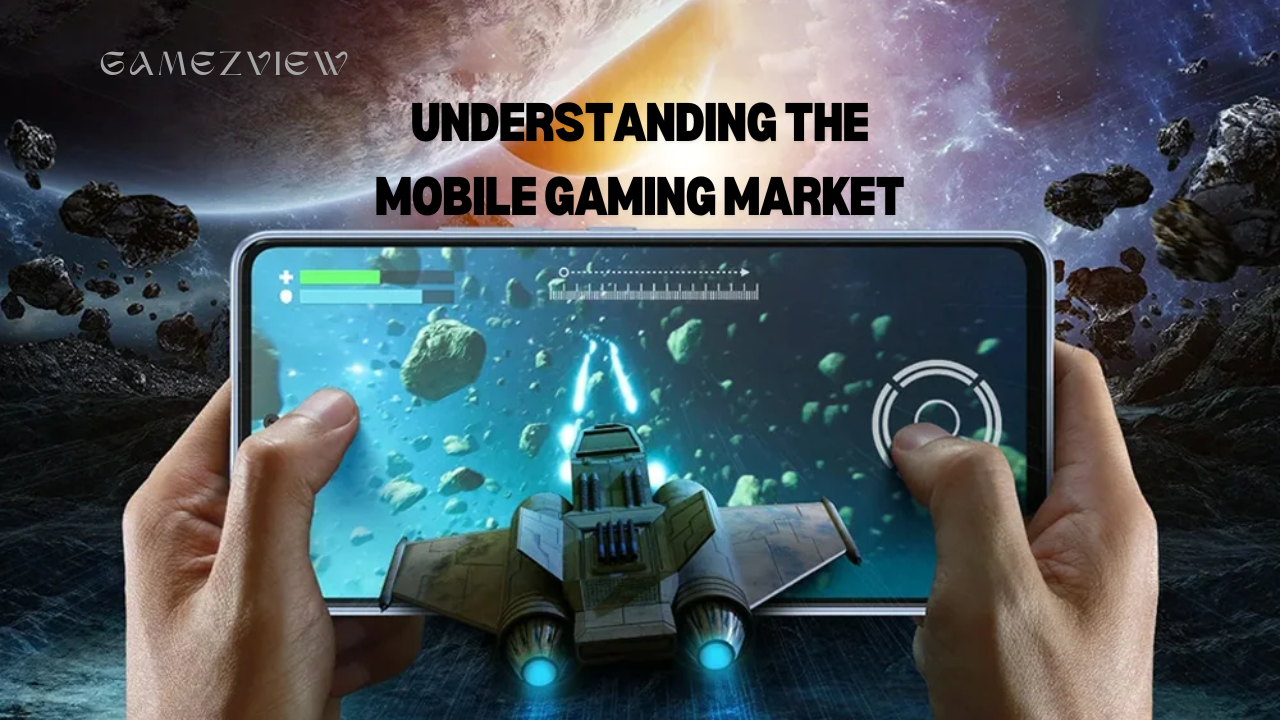The mobile gaming market has witnessed exponential growth over the past decade, becoming a significant segment of the global gaming industry. This growth can be attributed to advancements in technology, the proliferation of smartphones, and a shift in consumer preferences towards on-the-go entertainment. Understanding the dynamics of this market is crucial for developers, investors, and marketers aiming to tap into its potential. This article delves into the factors driving the mobile gaming market, its current trends, and prospects.
1. Overview of the Mobile Gaming Market
The mobile gaming market encompasses games played on mobile devices, including smartphones and tablets. According to recent reports, mobile gaming accounts for a substantial portion of the global gaming market, with revenues surpassing those of console and PC gaming combined. This segment’s popularity is driven by the accessibility and convenience of mobile devices, allowing users to engage in gaming anytime and anywhere.
Ultimate PUBG Tips and Tricks for Beginners: Master the Battlegrounds
2. Key Drivers of Market Growth
Several factors contribute to the robust growth of the mobile gaming market:
- Smartphone Penetration: The widespread adoption of smartphones has been a significant driver. As mobile devices become more affordable and advanced, they reach a broader audience, including regions previously underserved by gaming technology.
- Technological Advancements: Innovations in mobile technology, such as improved processors, higher-resolution screens, and enhanced graphics capabilities, have elevated the quality of mobile games. Augmented reality (AR) and virtual reality (VR) integrations are also expanding the possibilities for immersive gaming experiences.
- Freemium Model: The freemium model, where games are offered for free but include in-app purchases, has proven highly successful. This model attracts a large user base and generates revenue through microtransactions, such as virtual goods and premium features.
- Diverse Game Genres: The availability of various game genres, from casual games and puzzles to action-packed adventures and strategy games, caters to a wide range of preferences. This diversity helps attract and retain a broad audience.
- Social and Multiplayer Features: Social integration and multiplayer features enhance user engagement by allowing players to connect with friends, compete in real-time, and share achievements. This social aspect contributes to higher user retention and growth.

3. Market Segmentation
The mobile gaming market can be segmented based on several criteria:
- By Platform: Mobile games are primarily available on iOS and Android platforms. Both platforms offer distinct app stores (Apple App Store and Google Play Store), each with its ecosystem and user base.
- By Game Type: The market includes various game types such as casual games, role-playing games (RPGs), strategy games, sports games, and more. Casual games, characterized by their simple mechanics and short play sessions, dominate the market due to their broad appeal.
- By Revenue Model: Revenue models include freemium games, subscription-based games, and pay-to-download games. Freemium games lead the market, while subscription models are gaining traction due to their stable revenue streams and exclusive content.
- By Region: The mobile gaming market is global, with significant contributions from North America, Europe, Asia-Pacific, Latin America, and the Middle East & Africa. The Asia-Pacific region, in particular, stands out as a major contributor due to its large population and high smartphone penetration.
4. Current Trends in Mobile Gaming
Several trends are shaping the mobile gaming market:
- Increased Focus on Augmented Reality (AR): AR games, such as “Pokémon GO,” have demonstrated the potential of blending digital and physical worlds. AR enhances the gaming experience by incorporating real-world elements, leading to innovative gameplay and interactive features.
- Rise of Cloud Gaming: Cloud gaming services allow players to stream games directly to their devices without needing powerful hardware. This trend is gaining momentum as it provides access to high-quality games on lower-end devices and reduces the need for large downloads and updates.
- Esports and Competitive Gaming: Mobile esports is growing, with tournaments and leagues dedicated to mobile games. Titles like “PUBG Mobile” and “League of Legends: Wild Rift” are fostering competitive scenes, attracting sponsorships, and creating new opportunities for players and developers.
- Personalization and AI Integration: Developers are increasingly using artificial intelligence (AI) to personalize gaming experiences. AI algorithms can analyze player behaviour, tailor content, and create dynamic in-game experiences that adapt to individual preferences.
- Cross-Platform Play: The ability to play games across different devices (e.g., mobile, console, PC) is becoming more common. Cross-platform play enhances social connectivity and expands player bases by allowing friends to compete together regardless of their chosen device.

5. Challenges Facing the Mobile Gaming Market
Despite its rapid growth, the mobile gaming market faces several challenges:
- Market Saturation: The proliferation of mobile games has led to market saturation, making it challenging for new games to stand out. Developers must invest in marketing and user acquisition strategies to gain visibility in a crowded market.
- Monetization Strategies: While the freemium model is popular, balancing in-app purchases and maintaining a fair gameplay experience is crucial. Over-reliance on microtransactions can lead to negative user experiences and backlash.
- Regulatory Concerns: Various regions are introducing regulations related to gaming, including data privacy laws and restrictions on in-game purchases. Developers must navigate these regulations to avoid legal issues and ensure compliance.
- Security and Privacy: Mobile games often collect personal data and financial information. Ensuring robust security measures and protecting user data from breaches are essential for maintaining player trust and compliance with data protection laws.
6. Future Outlook for the Mobile Gaming Market
The future of the mobile gaming market appears promising, with several key developments on the horizon:
- Continued Technological Advancements: As mobile technology continues to evolve, we can expect further enhancements in graphics, processing power, and connectivity. These advancements will drive innovation and enable more sophisticated gaming experiences.
- Expansion into Emerging Markets: Emerging markets, such as Africa and Southeast Asia, present significant growth opportunities. As smartphone penetration increases in these regions, the mobile gaming market is likely to expand, bringing new audiences and revenue streams.
- Integration of Emerging Technologies: Technologies like 5G, blockchain, and virtual reality are expected to play a role in shaping the future of mobile gaming. 5G will provide faster and more reliable connections, while blockchain may introduce new models for in-game economies and ownership.
- Focus on Sustainability and Ethical Practices: There is a growing emphasis on sustainability and ethical practices in gaming. Developers and companies are increasingly adopting environmentally friendly practices and promoting responsible gaming behaviours.

The mobile gaming market has experienced remarkable growth and continues to evolve rapidly. Driven by technological advancements, diverse game offerings, and innovative monetization strategies, the market presents significant opportunities for developers, investors, and marketers. While challenges such as market saturation and regulatory concerns exist, the future outlook remains positive, with continued advancements and expansion into emerging markets. By understanding the dynamics of the mobile gaming market, stakeholders can better navigate its complexities and capitalize on its potential for success.



